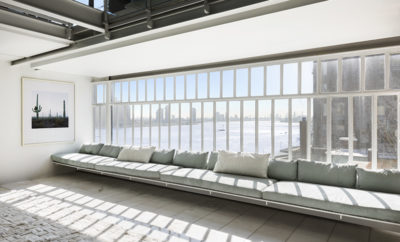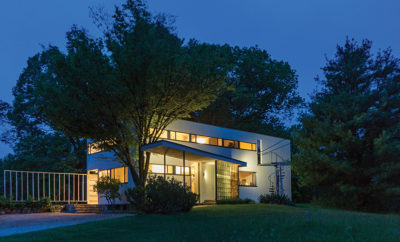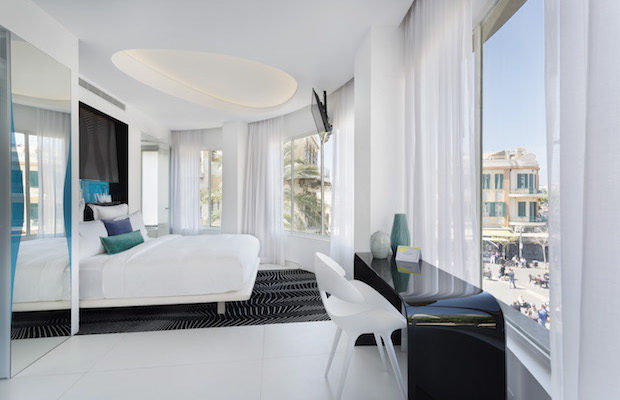 ALL IMAGES COURTESY ASSAF PINCHUK PHOTO
ALL IMAGES COURTESY ASSAF PINCHUK PHOTO
Architecture
Karim Rashid’s Bauhaus Variations
TAKE A NEGLECTED ICONIC BUILDING with a distinctive curved facade. Mix in a bustling location on a centrally located city corner and add an internationally renowned industrial designer. The result: the Poli House Hotel, a Tel Aviv boutique hotel that fearlessly upends convention.
The prospect of refashioning the 1934 Polishuk House, among the first of Tel Aviv’s more than four thousand “White City” Bauhaus structures, immediately appealed to Karim Rashid. The New York–based designer saw the building in all its dilapidated distress and compared it with black-and-white photos of the offices and stores that once occupied it. “I felt an affinity in my bones with Bauhaus,” he says. ”I saw it as a clean white canvas to play on the Bauhaus vernacular, a reductive way of making space.”
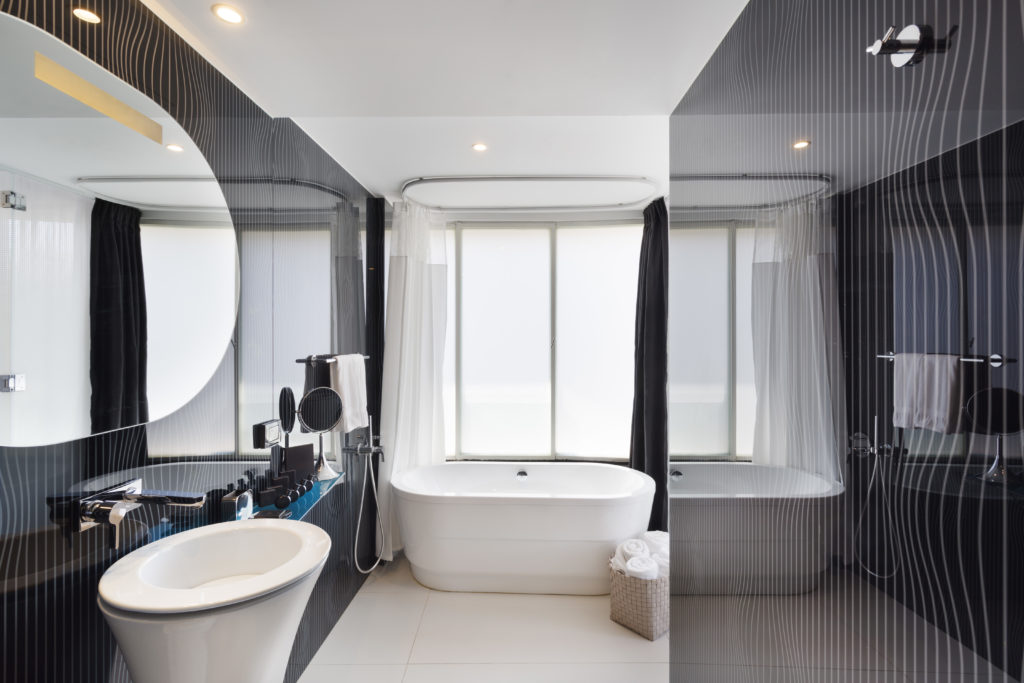
Rashid says that he also wanted to connect with the digital age. “A hotel is not a home away from home. Hotels are static. Let’s make the static world into a visual installation.” He began with an adventurous floorplan. “I skewed the hotel hallways almost crooked, to break the purity of the Bauhaus grid,” he explains, “and I liked the freedom to make the space wild.”
Color blasts the eye from the first step inside through the huge, curved glass walls marked by “Hello” scrawled in pink neon. Rashid’s brilliant yellow slab counter, white Bloob stools, and three cocooning vivid pink Koop chairs are a welcome contrast to the gray, gritty city outside. One wall is covered with his hand-drawn blueprints and sketches, commentary on the design process. This inviting space with a concierge and flasks filled with flavored water is not a typical lobby: guests actually check in on the roof four floors above.

Rashid saw the elevators as a way to set the mood. LED lights change color according to each floor’s color scheme while flashing text and positive messages such as “city here I come” and “summertime living is easy.”
The rooftop level was designed as the focal point celebrating the city. “You see a panorama of Tel Aviv as you check in, and the bar is there if you have to wait for your room,” Rashid says. Old and new merge seamlessly. Floor tiles copied from an original 1930s Tel Aviv building provide a dynamic backdrop for Rashid’s white mushroom stools and yellow Koop chairs at the front desk. Rashid created a Tel Aviv beach aesthetic in the cocktail bar, lounging areas, cabanas, and spa surrounding the raised pool (an unusual addition to the roof of a Tel Aviv Bauhaus building).
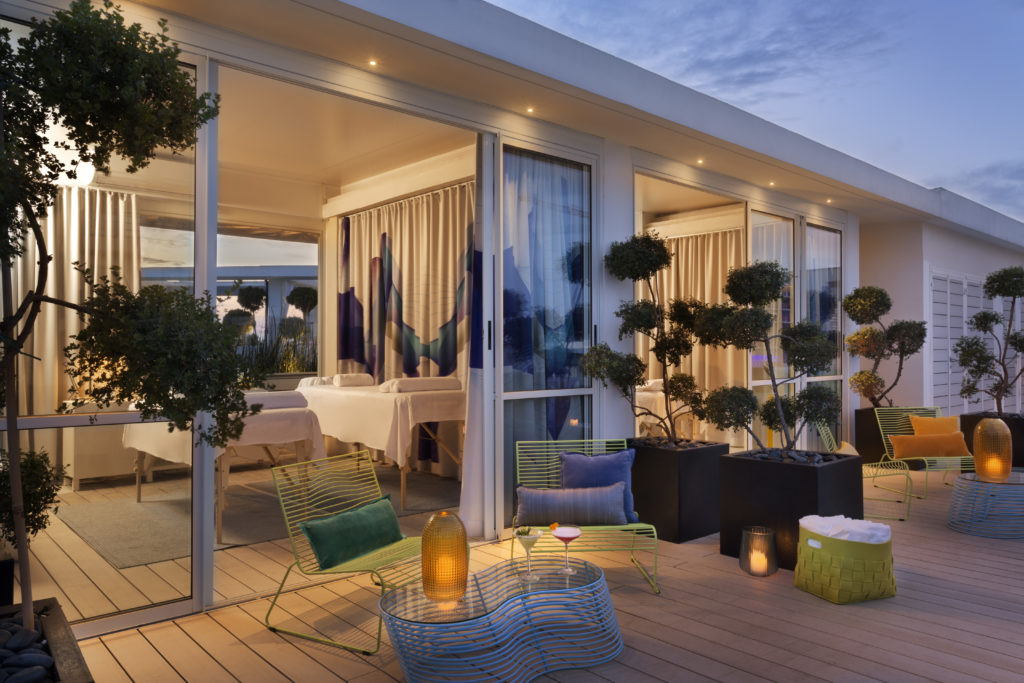
On one guest floor the hallway is bright blue, on another yellow, the walls on both covered with a digitally patterned wallpaper. Rashid focused on making the forty guest rooms look as spacious as possible with a common theme of white on white, enlivened with colorful headboards and mirrors. Walls and rugs are covered with black and white digital designs. In some bathrooms, a whirling green, blue, and white design contrasts with bold black and white stripes. For all his whimsical, futuristic ideas, Rashid had to adhere to strict rules in the meticulous three-year renovation of the Bauhaus building. The original windows had to be preserved, for instance, and no changes to the main staircase were permitted. Still, he brought some outerspace chic to the bottom of the stairwell area with a bright yellow serpentine lounge and a glossy black bench.
The Poli House Hotel seizes a celebrated design of the past and takes it into the future—all while capturing the spirit of Tel Aviv. But above all, the building’s function remains paramount. “I want people to really enjoy a few days in the hotel, to have the experience of really being alive.”


